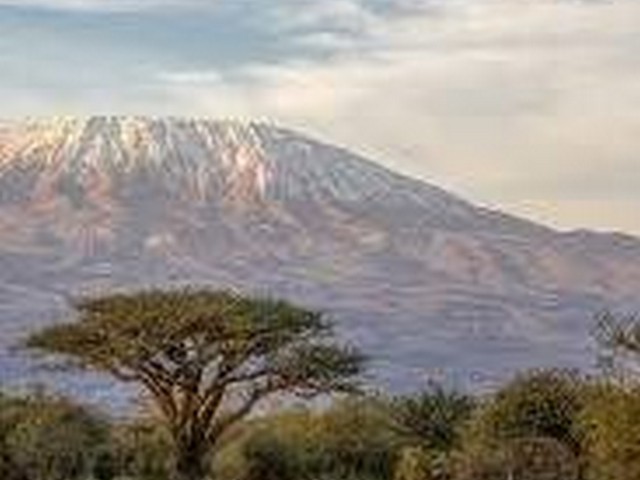What to Wear on Your Kilimanjaro Trek: A Guide from the Experts at KCTE
Embarking on a trek up Mount Kilimanjaro is not just a journey through the physical landscape but also a profound personal adventure. As you traverse from lush rainforests to arid alpine deserts and finally to the icy summit, the mountain demands resilience and respect. Central to a successful ascent is dressing appropriately, which can significantly enhance your comfort and enjoyment on the mountain. At Kilimanjaro Centre for Trekking and Ecotourism (KCTE), we understand the importance of preparation, and we’re here to guide you through the essential clothing choices that will help you conquer the Roof of Africa.
Understanding Kilimanjaro’s Unique Climate Zones
Before diving into specific clothing items, it’s crucial to appreciate the diverse climates of Kilimanjaro. Your journey will start in a warm, tropical atmosphere and ascend through five distinct ecological zones—each colder than the last until you reach the summit, Uhuru Peak, where temperatures can drop below freezing.
Layering: The Secret to Comfort
The key to handling this range of environments lies in layering. Effective layering allows you to adjust your body temperature as you climb higher or as daily temperatures shift.
Base Layer: Moisture Management
Start with a moisture-wicking base layer. This layer keeps sweat away from your skin, keeping you dry and comfortable. Opt for materials like merino wool or synthetic fibers rather than cotton, which retains moisture.
Insulating Layer: Retaining Heat
The middle layer serves as your primary insulation. Fleece jackets or down vests are perfect for this purpose, offering warmth while being lightweight and easy to pack.
Outer Layer: Protection Against the Elements
The outermost layer should be waterproof and windproof, especially designed to protect against the harsh winds and potential precipitation as you ascend. A breathable yet sturdy jacket is ideal.
Essential Clothing for Your Kilimanjaro Trek
Head and Neck Wear
- Beanie or Wool Hat: Keeps your head warm as temperatures drop.
- Buff or Neck Gaiter: Versatile accessory that protects your neck and can be pulled up to cover your face against wind or dust.
Upper Body
- Long Sleeve Shirts: Breathable and moisture-wicking to keep you dry.
- Insulated Jacket: Necessary for the colder parts of your climb, ideally with a hood.
Lower Body
- Hiking Pants: Look for options that are water-resistant and breathable.
- Thermal Leggings or Tights: Worn underneath your pants for additional warmth.
Hands and Feet
- Gloves: Waterproof and insulated gloves are crucial, especially near the summit where frostbite can be a risk.
- Hiking Boots: A good pair of waterproof, broken-in hiking boots is indispensable.
- Wool Socks: Bring several pairs to ensure your feet stay warm, dry, and blister-free.
Technical Accessories
- Gaiters: Useful for keeping rocks and dirt out of your shoes and for additional warmth.
- Sunglasses: UV protection is critical at high altitudes.
Dressing for Success: From Rainforest to Summit
At the Base: Tropical Warmth
You’ll start in relative warmth, so a light shirt and standard hiking pants will suffice. However, keep your rain gear handy in your daypack, as the weather can change rapidly.
Mid-Mountain: Growing Chill
As the altitude increases, so does the chill. Layer up with your fleece or down vest. This is where your hat and gloves might start to come into play during the cooler mornings and evenings.
Approaching the Summit: The Alpine Challenge
Near the summit, you will face the coldest temperatures. All your layers will be utilized here. Ensure your outer layer is fully fastened, your gaiters are on, and every piece of skin is covered to protect against fierce winds and freezing temperatures.
Preparing for Your Kilimanjaro Adventure with KCTE
At Kilimanjaro Centre for Trekking and Ecotourism (KCTE), we’re not just committed to guiding you safely up and down this majestic mountain; we aim to provide a transformative and inspiring experience. Our expert guides, comprehensive trek support, and attention to detail ensure that every aspect of your journey is covered, so you can focus on the breathtaking views and personal achievement.
Why Choose KCTE for Your Kilimanjaro Trek?
- Experienced Guides: Our guides are knowledgeable, friendly, and focused on your safety and enjoyment.
- Tailored Treks: We offer various routes and can tailor the trek according to your needs and preferences.
- Sustainable Practices: We are committed to the conservation of Mount Kilimanjaro and operate under strict eco-friendly principles.
FAQs: What to Wear on Kilimanjaro Trek
Q: How many layers should I wear while climbing Kilimanjaro?
A: Typically, three layers suffice – a base layer, an insulating layer, and a protective outer layer. Adjust these based on your personal comfort and the altitude.
Q: Can I rent gear from KCTE?
A: Yes, KCTE provides rental options for essential gear like insulated jackets, sleeping bags, and walking poles.
Q: What should I absolutely not wear on Kilimanjaro?
A: Avoid cotton clothing as it absorbs moisture, and steer clear of jeans and heavy materials that don’t offer flexibility or breathability.
Embarking on a Kilimanjaro trek is an adventure of a lifetime. Being properly dressed is key to enjoying and successfully completing your climb. Ready to take the first step on this incredible journey? Contact Kilimanjaro Centre for Trekking and Ecotourism (KCTE) today, and let us help you prepare for a trek that you’ll remember forever. Reach for the summit—we’ll be with you every step of the way!




